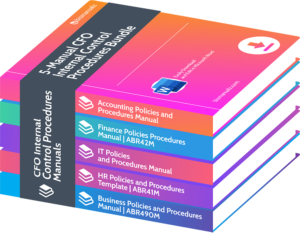What Should a CFO Know About Budgeting And Forecasting?

As the financial landscape continues to evolve, it is crucial for CFOs to stay knowledgeable about budgeting and forecasting processes. In this article, we will explore key insights and tips that every CFO should know in order to effectively manage their company’s budget and forecasting to answer the questions: what should a CFO know about budgeting and forecasting?
What Is Budgeting and Forecasting?
Budgeting and forecasting are crucial tools for financial planning that allow CFOs to make well-informed decisions and efficiently manage financial resources. Budgeting involves creating a detailed plan for income and expenses over a specific period, which helps set financial goals and allocate resources accordingly.
On the other hand, forecasting involves using historical data and market trends to predict future financial outcomes, allowing CFOs to anticipate potential risks and opportunities. By integrating these two processes, CFOs can gain valuable insights into their organization’s financial health and make strategic decisions to drive growth and profitability.
Some suggestions for CFOs include:
- Regularly reviewing and updating budgets.
- Utilizing technology for accurate forecasting.
- Working closely with other departments to align financial goals.
Why Is Budgeting and Forecasting Important for a CFO?
Budgeting and forecasting play a crucial role for a CFO due to their responsibilities in financial planning, decision-making, and performance evaluation.
- Planning: CFOs rely on budgets and forecasts to establish financial goals, allocate resources, and formulate strategies that align with the company’s objectives.
- Decision-making: Accurate budgets provide CFOs with necessary information to make well-informed decisions regarding investments, cost control, and capital allocation, ensuring efficient utilization of financial resources.
- Evaluation: Budgets and forecasts allow CFOs to monitor performance, identify discrepancies, and take corrective measures to achieve financial targets.
- Communication: CFOs utilize budgets and forecasts to promote transparency and accountability, facilitating effective communication with stakeholders.
What Are the Benefits of Budgeting and Forecasting for a Company?
Budgeting and forecasting offer numerous advantages for a company, including:
- Enhanced Financial Planning: By incorporating budgeting and forecasting practices, companies can effectively plan and manage their finances, ensuring proper allocation of resources and avoiding overspending.
- Informed Decision Making: By analyzing historical data and market trends, companies can make well-informed decisions regarding investments, expansion, and cost management, resulting in better outcomes.
- Alignment of Goals: Budgeting and forecasting aid in aligning company goals and objectives with financial targets, facilitating better tracking of progress and evaluation of performance.
- Identification of Risks: Through budgeting and forecasting, potential risks and opportunities can be identified, allowing companies to develop contingency plans and take proactive measures to mitigate risks.
- Efficient Resource Allocation: Budgeting and forecasting enable companies to allocate resources efficiently, ensuring that funds are distributed to areas with the highest returns and in support of strategic initiatives.
- Evaluation of Performance: By setting realistic targets and goals, budgeting and forecasting help evaluate the company’s performance and identify areas for improvement.
Incorporating budgeting and forecasting practices can result in improved financial stability, strategic decision making, and overall company growth.
What Are the Key Components of Budgeting and Forecasting?
As a CFO, understanding the key components of budgeting and forecasting is crucial for effectively managing a company’s finances. These components involve analyzing historical data, staying informed on market trends and projections, and aligning with the company’s goals and objectives.
By delving into each of these areas, we can gain a comprehensive understanding of the essential aspects of budgeting and forecasting and how they play a vital role in driving a company’s financial success. So let’s dive in and explore the key components of budgeting and forecasting.
1. Historical Data Analysis
Historical Data Analysis is a crucial aspect of budgeting and forecasting for a CFO. It involves examining past financial and operational data to identify trends, patterns, and insights that can guide future budgeting decisions. The following are the steps involved in conducting historical data analysis:
- Gather relevant historical data, including financial statements, sales records, and operational metrics.
- Organize the data in a structured format, ensuring accuracy and completeness.
- Utilize statistical techniques such as trend analysis, variance analysis, and regression analysis to analyze the data.
- Identify key trends and patterns, such as seasonality, growth rates, and cost drivers.
- Compare historical data with industry benchmarks and competitors’ performance to gain additional insights.
- Utilize the findings from the analysis to forecast future financial performance and establish budget targets.
By utilizing historical data analysis, CFOs can make more informed decisions regarding budgeting and forecasting, resulting in improved financial performance and strategic planning.
2. Market Trends and Projections
Market trends and projections play a vital role in budgeting and forecasting for a CFO. Through thorough analysis of market trends, CFOs can gain valuable insights into consumer demands, industry shifts, and potential opportunities. Projections also allow CFOs to anticipate future market conditions and make well-informed financial decisions.
By understanding market trends, CFOs can set realistic targets and goals for their company. Staying up-to-date with market trends and projections allows CFOs to adjust their budgeting and forecasting strategies to align with changing market dynamics, effectively allocate resources, manage risks, and capitalize on growth opportunities.
3. Company Goals and Objectives
Budgeting and forecasting are essential components in aligning a company’s financial plans with its goals and objectives. Through careful analysis of historical data, market trends, and specific targets, CFOs can create a comprehensive budget and forecast. This allows for informed decision-making, efficient resource allocation, and realistic goal-setting.
Involving all departments and stakeholders in the process ensures that the budget and forecast accurately reflect the company’s goals and objectives. Regularly reviewing and updating the budget, utilizing technology and automation, helps to maintain an up-to-date financial plan.
Despite potential challenges such as inaccurate data and market volatility, CFOs must prioritize budgeting and forecasting in order to drive the company towards its goals and objectives.
How Does Budgeting and Forecasting Help with Decision Making?
As a CFO, understanding the importance of budgeting and forecasting is crucial for making informed and effective decisions. By utilizing these financial tools, you can gain valuable insights into your company’s financial health and make strategic decisions to drive growth and success.
In this section, we will discuss how budgeting and forecasting can aid in decision making by identifying potential risks and opportunities, allocating resources effectively, and setting realistic targets and goals for your company.
1. Identifying Potential Risks and Opportunities
Identifying potential risks and opportunities is an essential aspect of budgeting and forecasting for a CFO. Here are the key steps to follow in this process:
- Analyze historical data to identify past risks and opportunities.
- Monitor market trends and projections to anticipate future risks and opportunities.
- Align company goals and objectives with potential risks and opportunities.
Fact: According to a study, companies that effectively identify and manage risks and opportunities through budgeting and forecasting are more likely to achieve long-term success.
2. Allocating Resources Effectively
Allocating resources effectively is crucial for successful budgeting and forecasting as it ensures optimal utilization of available funds. Here are steps to achieve this:
- Assess needs: Identify the specific resource requirements of each department or project.
- Prioritize: Determine the importance and urgency of each need to allocate resources accordingly.
- Consider constraints: Take into account any limitations or restrictions on resources, such as budgetary constraints or capacity limitations.
- Allocate strategically: Distribute resources based on a strategic plan that aligns with the company’s goals and objectives.
- Monitor and adjust: Regularly review resource allocation to ensure effectiveness and make adjustments as needed.
To enhance resource allocation, Chief Financial Officers (CFOs) should consider implementing automated budgeting and forecasting tools, fostering cross-departmental collaboration, and staying updated on market trends and potential risks.
3. Setting Realistic Targets and Goals
Setting realistic targets and goals in budgeting and forecasting is crucial for the success of a company. Here are three steps to achieve this:
- Review historical data: Analyze past performance to understand trends and make informed projections.
- Consider market conditions: Evaluate market trends and factors that may impact the company’s goals. This helps set targets that align with the external environment.
- Align with objectives: Ensure that the targets and goals set in the budgeting and forecasting process align with the company’s overall goals and objectives, including the 3. Setting Realistic Targets and Goals.
What Are the Best Practices for Budgeting and Forecasting?
As a CFO, it is crucial to have a solid understanding of budgeting and forecasting to effectively manage a company’s financial health. In this section, we will discuss the best practices for budgeting and forecasting that every CFO should know.
These include involving all departments and stakeholders in the process, regularly reviewing and updating the budget and forecast, and utilizing technology and automation to streamline the process. By implementing these practices, CFOs can ensure accurate and efficient budgeting and forecasting for their organization.
1. Involving All Departments and Stakeholders
Involving all departments and stakeholders is essential for effective budgeting and forecasting. To ensure their participation, follow these steps:
- Identify key departments and stakeholders that will be affected by the budget and forecast.
- Communicate the importance and objectives of budgeting and forecasting to all relevant parties.
- Hold collaborative meetings to gather input and insights from each department and stakeholder.
- Foster open and transparent communication to address any concerns or challenges.
- Involve department heads and stakeholders in the decision-making process to ensure their buy-in and ownership.
- Regularly update and share progress with all parties involved to maintain engagement and accountability.
By involving all departments and stakeholders, you can leverage their expertise and insights for more accurate and comprehensive budgeting and forecasting outcomes. It also promotes a sense of ownership and alignment throughout the organization.
2. Regularly Reviewing and Updating the Budget and Forecast
- Establish a regular review schedule: Set a timeline for regularly reviewing and updating the budget and forecast, such as monthly or quarterly.
- Collect updated financial data: Gather the most recent financial information, including sales figures, expenses, and any other relevant data.
- Analyze performance: Compare the actual financial results to the budgeted numbers to identify any variances or discrepancies.
- Make necessary adjustments: Based on the analysis of performance and any new information or insights, make necessary changes to the budget and forecast.
- Communicate updates: Share the updated budget and forecast with relevant stakeholders, such as department heads and executives.
To ensure effective budgeting and forecasting, it is crucial to regularly review and update the budget and forecast. This ensures that the financial plans remain aligned with changing business conditions and allows for timely decision-making based on accurate information.
3. Using Technology and Automation
Incorporating technology and automation in the budgeting and forecasting process can greatly enhance efficiency and accuracy. Here are the steps to effectively utilize technology and automation:
- Implement budgeting and forecasting software that allows for streamlined data entry and analysis.
- Integrate data from various sources, such as financial systems and CRM platforms, to ensure comprehensive and up-to-date information.
- Automate the generation of financial reports and forecasts to save time and eliminate manual errors.
- Utilize data visualization tools to present budget and forecast information in a clear and easily understandable format.
- Leverage predictive analytics to improve forecasting accuracy and identify potential risks and opportunities.
The use of technology and automation in budgeting and forecasting has revolutionized the financial industry. Companies that have embraced these tools have seen significant improvements in accuracy, efficiency, and decision-making capabilities.
By leveraging advanced software and data analytics, CFOs are now able to make data-driven decisions and respond quickly to changing market conditions. Additionally, these technologies have enabled seamless collaboration among departments and stakeholders, leading to more informed and strategic financial planning.
Overall, the adoption of technology and automation has transformed the budgeting and forecasting process, empowering CFOs to navigate the complexities of today’s business landscape with confidence.
What Are Some Common Challenges Faced in Budgeting and Forecasting?
Budgeting and forecasting are crucial aspects of financial management for any organization. However, these processes often present a range of challenges that can hinder their effectiveness and accuracy.
In this section, we will delve into the common challenges faced in budgeting and forecasting, including inaccurate data and assumptions, lack of communication and collaboration, and external factors and market volatility. By understanding these challenges, CFOs can better prepare and strategize for successful budgeting and forecasting.
1. Inaccurate Data and Assumptions
Inaccurate data and assumptions can have a significant impact on the effectiveness of budgeting and forecasting. To ensure accuracy, follow these steps:
- Verify data sources: Use reliable sources and cross-reference information to minimize errors.
- Regularly update data: Keep data up-to-date to reflect current market conditions and trends.
- Validate assumptions: Test assumptions against historical data and market insights to ensure they are realistic.
- Involve experts: Seek input from subject matter experts to validate assumptions and enhance accuracy.
- Use statistical models: Utilize statistical models to analyze data and make more accurate forecasts.
Fact: Inaccurate data and assumptions can lead to inefficient resource allocation and missed growth opportunities.
2. Lack of Communication and Collaboration
Lack of communication and collaboration can greatly hinder the effectiveness of budgeting and forecasting processes for a Chief Financial Officer (CFO). This can result in inaccurate data, misunderstandings, and missed opportunities.
To overcome this challenge, it is crucial for the CFO to promote open communication channels among all departments and stakeholders involved in the budgeting and forecasting process. Regular meetings and feedback sessions can help ensure that everyone is on the same page and working towards common goals.
Additionally, utilizing collaboration tools and software can facilitate real-time collaboration and transparency, making it easier for teams to work together and make well-informed decisions.
3. External Factors and Market Volatility
External factors and market volatility can greatly impact the accuracy of budgeting and forecasting for a company. To mitigate these challenges, CFOs should follow these steps:
- Stay informed: Continuously monitor economic indicators, industry trends, and market conditions.
- Conduct scenario analysis: Create multiple budget and forecast scenarios based on different external factors and market conditions.
- Adjust assumptions: Update assumptions and variables in the budget and forecast model to reflect changes in external factors and market volatility.
- Collaborate with stakeholders: Engage with relevant departments and stakeholders to gather insights and perspectives on how external factors may affect the budget and forecast.
Pro-tip: Regularly review and update the budget and forecast to ensure they align with the latest external factors and market conditions, enabling more accurate decision-making.
CFO Budgeting And Forecasting
It is critical to be up to date on CFO budgeting and forecasting procedures as the financial landscape changes further. CFOs may make educated judgments and effectively manage financial resources by using forecasting and budgeting, two essential financial planning tools.
By putting together a thorough plan for revenue and expenses over a predetermined time frame, budgeting aids in goal-setting and resource allocation. Conversely, forecasting enables CFOs to foresee possible hazards and opportunities by utilizing past data and market patterns to project future financial results. Through the integration of these two processes, CFOs may obtain significant insights into the financial well-being of their firm and make well-informed decisions to propel growth and profitability.
Frequently Asked Questions

What is budgeting and forecasting?
Budgeting and forecasting is the process of setting financial goals and predicting future financial outcomes for a company. It involves analyzing historical data, market trends, and projected expenses to create a plan for managing the company’s finances.
Why is budgeting and forecasting important for a CFO?
As the chief financial officer, it is crucial to have a deep understanding of the company’s financial health and future prospects. Budgeting and forecasting allow CFOs to make informed decisions and strategies to ensure financial stability and growth for the company.
What are the key components of a budget and forecast?
The key components of a budget and forecast include projected revenue, expenses, profits, cash flow, and capital expenditures. It also includes assumptions, goals, and strategies for achieving financial targets.
How often should a budget and forecast be reviewed and updated?
A budget and forecast should be reviewed and updated regularly, at least on a quarterly basis. This allows for adjustments to be made to reflect any changes in the market and the company’s performance.
What challenges should a CFO be aware of when budgeting and forecasting?
CFOs should be aware of potential challenges such as inaccurate or incomplete data, changing market conditions, and unforeseen expenses. They should also consider potential risks and uncertainties that could impact the company’s financial plans.
What are some best practices for successful budgeting and forecasting?
Some best practices for successful budgeting and forecasting include involving all relevant departments in the process, using reliable data and tools, regularly reviewing and adjusting the budget, and being realistic and flexible in setting financial goals.
















Leave a Reply